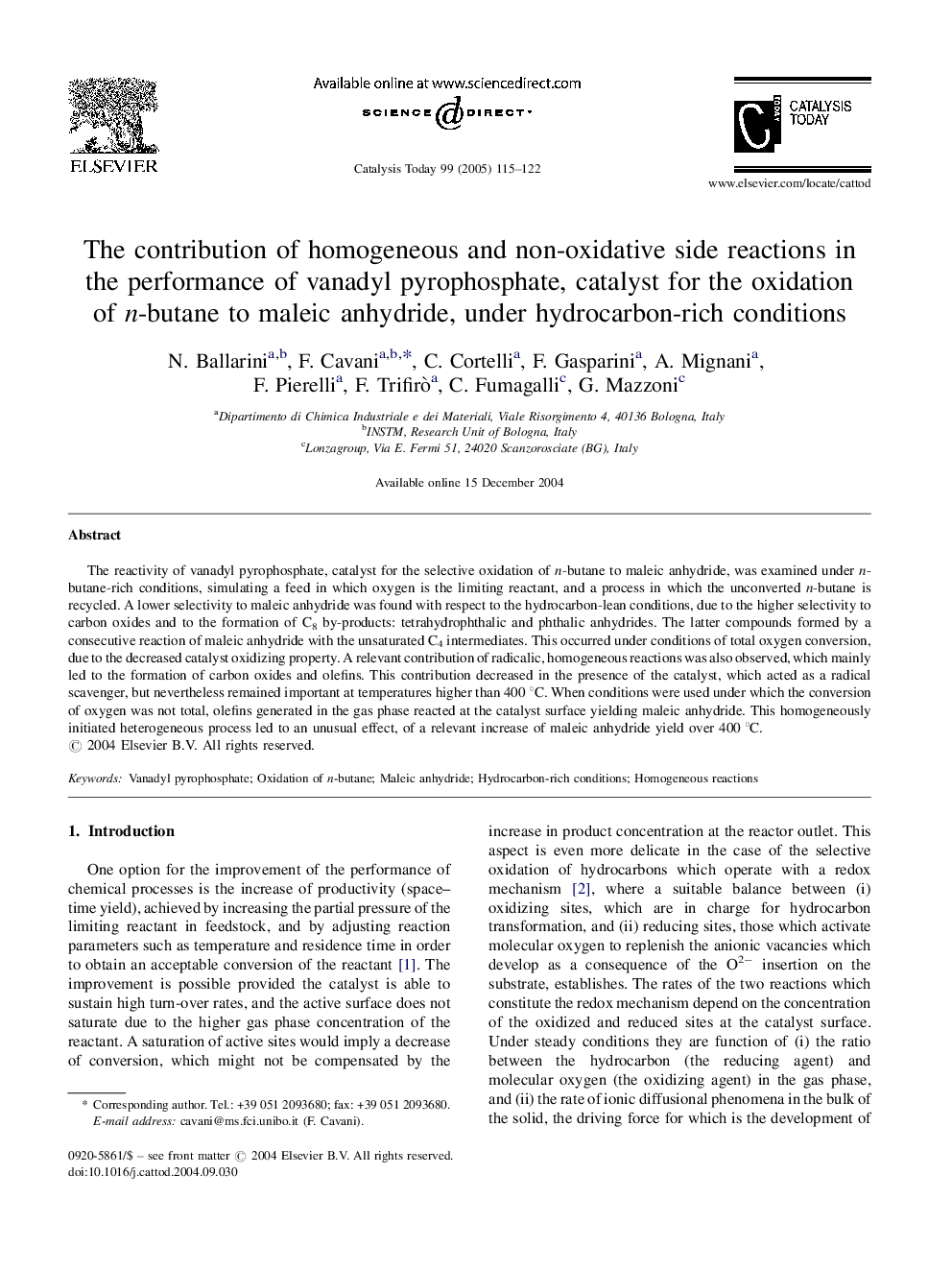| Article ID | Journal | Published Year | Pages | File Type |
|---|---|---|---|---|
| 9610584 | Catalysis Today | 2005 | 8 Pages |
Abstract
The reactivity of vanadyl pyrophosphate, catalyst for the selective oxidation of n-butane to maleic anhydride, was examined under n-butane-rich conditions, simulating a feed in which oxygen is the limiting reactant, and a process in which the unconverted n-butane is recycled. A lower selectivity to maleic anhydride was found with respect to the hydrocarbon-lean conditions, due to the higher selectivity to carbon oxides and to the formation of C8 by-products: tetrahydrophthalic and phthalic anhydrides. The latter compounds formed by a consecutive reaction of maleic anhydride with the unsaturated C4 intermediates. This occurred under conditions of total oxygen conversion, due to the decreased catalyst oxidizing property. A relevant contribution of radicalic, homogeneous reactions was also observed, which mainly led to the formation of carbon oxides and olefins. This contribution decreased in the presence of the catalyst, which acted as a radical scavenger, but nevertheless remained important at temperatures higher than 400 °C. When conditions were used under which the conversion of oxygen was not total, olefins generated in the gas phase reacted at the catalyst surface yielding maleic anhydride. This homogeneously initiated heterogeneous process led to an unusual effect, of a relevant increase of maleic anhydride yield over 400 °C.
Related Topics
Physical Sciences and Engineering
Chemical Engineering
Catalysis
Authors
N. Ballarini, F. Cavani, C. Cortelli, F. Gasparini, A. Mignani, F. Pierelli, F. Trifirò, C. Fumagalli, G. Mazzoni,
